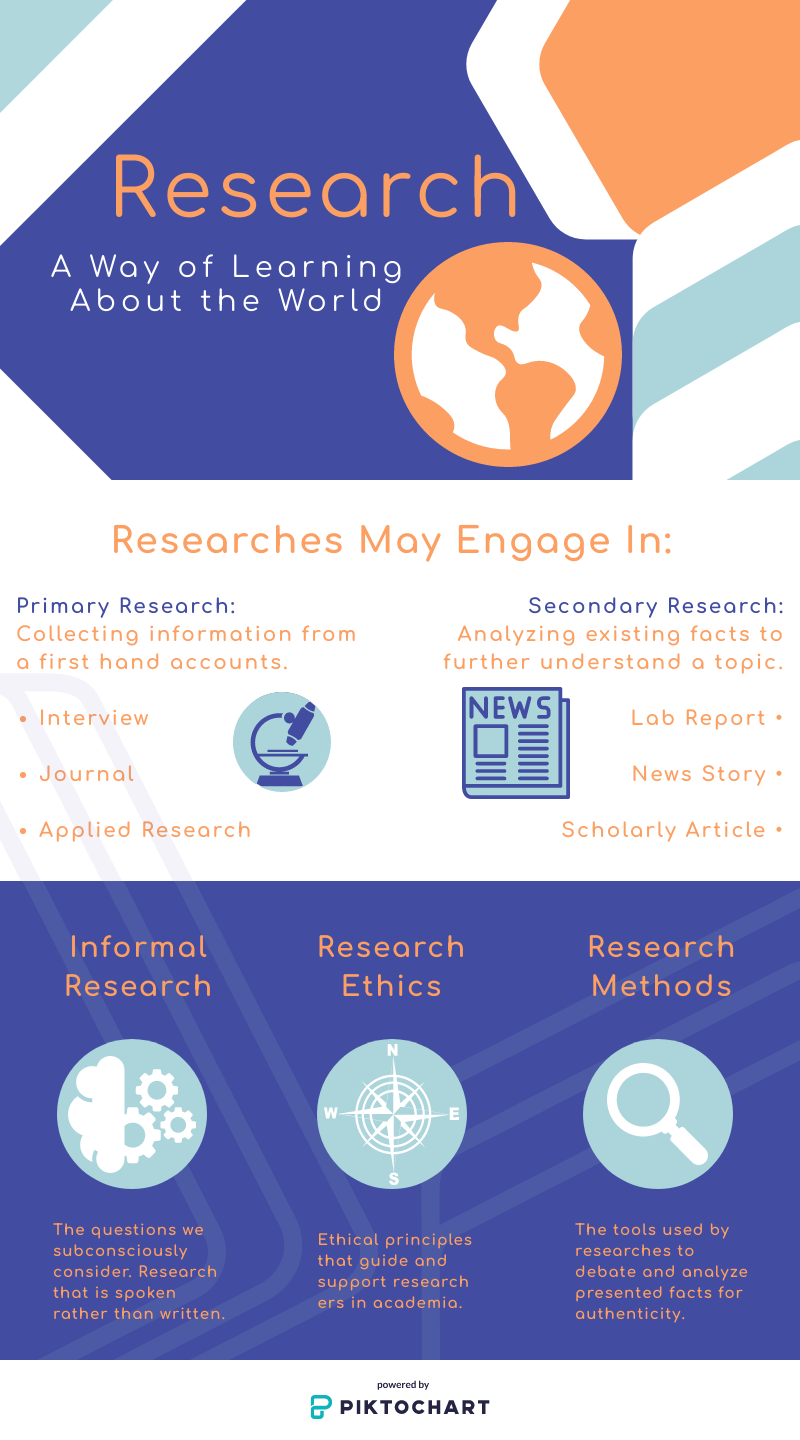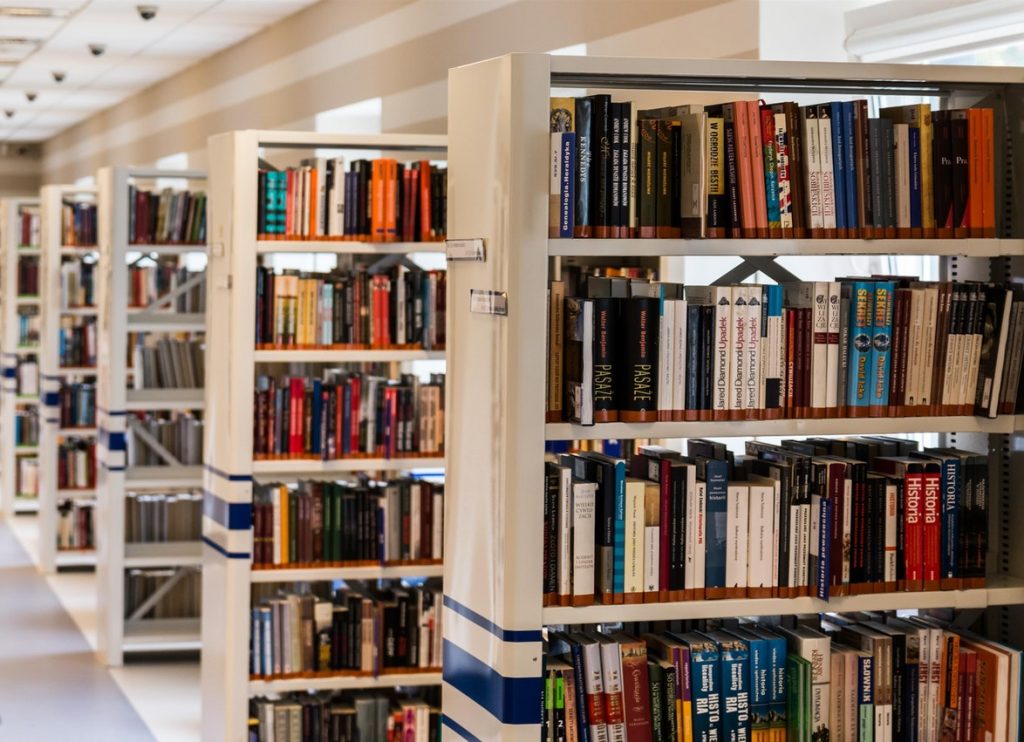6.2 Performing Research
In order to write effective technical documents, technical writers need to do their research. Even if the subject matter is familiar, getting the facts straight ahead of time is essential for a successful project, assignment, or document.
There are a number of ways technical writers conduct research, such as the following
- Online – When a person is writing up a user manual, they might be able to find the necessary information online to complete their assignment.
- On-the-job – Many technical writers are already experts in their field, so they can rely on personal experience to create their documents.
- Interviews – In some cases, a technical writer may have to set up an interview with another professional to get the necessary details for the end result.
- Libraries and other research facilities – And there’s always the library for additional assignment-related information.
Effective Research Processes
Simply going to an information source, extracting it, and then putting it into your draft is not enough. While this might work for everyday writing, technical writing is meant to be used actively, so its content needs to be accurate.
-
-
- Know the goal– Understanding the goal or purpose of the user document will guide the research process and allow the technical writer to find appropriate facts to use.
-
-
-
- Check and double check– It never hurts to check the facts and then to check them again to ensure they are accurate.
-
-
-
- Find multiple sources– Whenever possible, find multiple sources for the material and cite them in the technical writing document.
-
-
-
- Talk with experts in the field– Another way to verify information, talking with experts in the field can yield better information from their experience.
-

Technical Writing Research Methods
Research is not just the collection of facts for a technical writing document; it is a process in which information is uncovered and expressed in a meaningful way to the audience. Before you begin documenting your deliverables, you need to gather all the required information. You need to conduct different research methods to do this. Here are a few methods of conducting research in technical documentation:
Primary Research – Conduct primary research either using the source documents or interacting with the subject matter experts. These methods are called primary methods as you get first-hand information from the two most reliable sources – specifications documents and the subject matter experts.
Gathering Information from Sources – Begin reading and gathering all the available information on your topic from websites, library databases, as well as print media. However, you’ll likely encounter information irrelevant to your topic and audience, so you need to analyze the impact your sources will likely have on your audience.
Collecting Information from Subject Matter Experts (SMEs) – Interacting with subject matter experts can help you answer research questions and provide accurate information for your report. Subject matter experts (SMEs), such as engineers and developers, are often able to provide all the information you need to answer all your questions.
Secondary Research – Use additional methods that help you in gathering the information through logical methods, apart from the direct methods specified earlier. The different methods of conducting secondary research are as follows:
Preparing an Outline – Start framing the outline on the basis of the available information. Thus, you can identify the gaps and you can perform additional tasks to fill such gaps. An outline makes the writing process more efficient and focused. It presents the material in a logical form and shows the connections of ideas in your writing. Alongside constructing an ordered overview of your writing, it also defines boundaries and groups. See a sample outline here.
Information Mapping – Use this research-based, tested, and proven methodology to develop documentation. It is a tool that helps you develop documentation, which is organized and presented in a manner that is clear and usable to the reader. Information mapping helps in making documents consistent and easy to understand.
*TIP: Strong research blends primary and secondary research.
Watch the following video, “Research in Technical Writing,” by William Smith:
Getting Started with Research
Research is about questions. In the beginning the questions are focused on helping you determine a topic and types of information and sources; later in the research process, the questions are focused on expanding and supporting your ideas and claims as well as helping you stay focused on the specific rhetorical situation of your project.
Questions to help you get started
-
-
- What is my timeline for the project? You will likely want to set personal deadlines in addition to your actual deadline (from your instructor or employer).
- What do I want to know or learn about? This helps you determine scope or the limits of your research.
- What do I already know about this topic?
- What biases might I have about this topic? How might I combat these biases?
-
Questions to determine methodology
-
-
- Where might I find useful, reliable information about this topic? For academic research, you will generally focus on library, technical, scientific, and governmental resources. It is fine if you are not quite sure exactly where you should look; your instructor should be able to help you determine some places that would be appropriate.
- Will I need to perform primary research, secondary research, or both?
-
Next you will develop a research question. By this point you should have a general idea of your topic and some general ideas of where you might begin your research. Once you have developed your research question(s), you are ready to begin searching for answers.
Where to look
In the 21st century, we generally turn to the internet when we have a question. For technical, scientific, and academic research, we can still turn to the internet, but where we visit changes. We will discuss a few different places where you can perform research including Google, Google Scholar, and college libraries.
Google & Google Scholar: The default research site for most students tends to be Google. Google can be a great starting place for a variety of research. You can use Google to find news articles and other popular sources, such as magazine articles and blog posts. You can use Google to discover keywords, alternative terms, and relevant professional businesses and organizations. The most important thing to remember about using Google is that search results are organized by popularity, not by accuracy. Further, because Google customizes search results based on a user’s search history, searches performed by different people or on different browsers may provide different results.
For many technical, scientific, and scholarly topics, Google will not provide access to the appropriate and necessary types of sources and information. Google Scholar, however, searches only academic and scientific journals, books, patents, and governmental and legal documents. This means the results will be more technical and scholarly and therefore more appropriate for much of the research you will be expected to perform as a student. Though Google Scholar will show academic and technical results, that does not mean that you will have access to the full-text documents. Many of the sources that appear on Google Scholar are from databases, publishers, or libraries, which means that they are often behind paywalls or password-protected. In many cases, this means you will have to turn to a university or other library for access.
University/College Libraries: Library resources, such as databases, peer-reviewed journals, and books, are generally the best bet for accurate and more technical information. A Google search might yield millions and millions of results and a Google Scholar search may yield tens or hundreds of thousands of results, but a library search will generally yield fewer but more relevant results.

Overall, library resources are more tightly controlled and vetted. Anyone can create a blog or website and post information, regardless of the accuracy or usefulness of the information. Library resources, in contrast, have generally gone through rigorous processes and revisions before publication. For example, academic and scientific journals have a review system in place—whether a peer-review process or an editorial board—both feature panels of people with expertise in the areas under consideration. Publishers for books also feature editorial boards who determine the usefulness and accuracy of information. Of course, this does not mean that every peer-reviewed journal article or book is 100% accurate and useful all of the time. Biases still exist, and many commonly accepted facts change over time with more research and analysis. Overall the process for these types of publications require that multiple people read and comment on the work, providing some checks and balances that are not present for general internet sources.
*At the bottom of this page you will find links to LBCC’s Library research databases.
Keyword searches
Once you decide on a general topic, you will need to determine keywords that you can use to search different resources.
It is important to have a wide range of keywords because not all terms will result in the same information. Developing a list of keywords can be aided by a quick Google search. A Google search may reveal more official language or terminology, broader or narrower terms and concepts, or related terms and concepts. You can use a couple different strategies to help narrow your search. Using quotation marks around two or more words means the search results will contain those words only in that specific order. For example, a search for “illegal aliens” would only provide results where these words appear in that exact order, with no other words between them. A search for illegal aliens without the quotation marks will show information on illegal aliens, too, but it will also show any sources that have the words illegal and alien anywhere in the text.
Now that you’ve chosen a topic, developed a research question, and gathered relevant resources, it’s time to put your research to use. The next section, “Using Your Research,” will help you do just that.
Additional Resources
- LBCC Library Databases:
- “What Is Research: Definition, Methods, Types & Examples,” an article from QuestionPro.com
CHAPTER ATTRIBUTION INFORMATION"Strategies for Conducting Research." A Guide to Technical Communications. [License: CC BY 4.0] Moxley, Joseph. "Research." WritingCommons.org. [License: CC BY NC-ND 4.0] "Research in Technical Writing." Uploaded by William Smith, 10 Apr. 2020. YouTube.com. |

